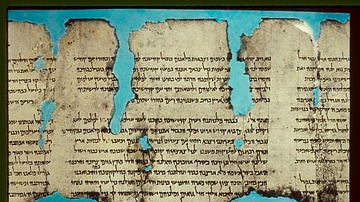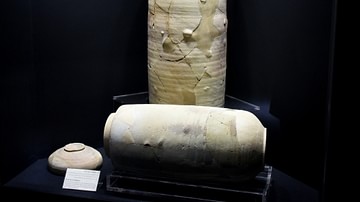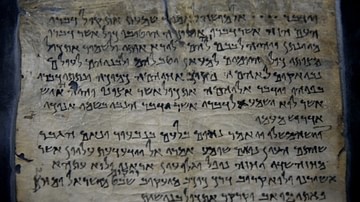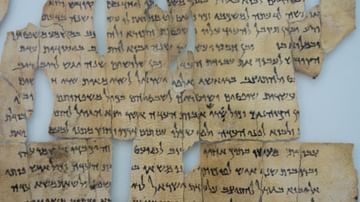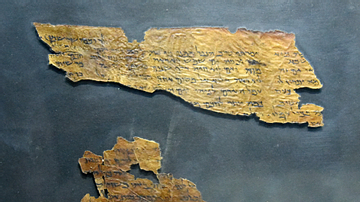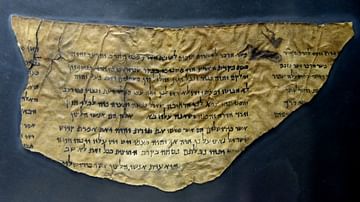Illustration
The Copper Scroll was discovered inside Cave 3 (Q3) at Qumran (Khirbat Qumran or Wadi Qumran). This is the only known inscription on metal from the Dead Sea area. The scroll originally consisted of three sheets of copper, totaling 2.3 meters in length. They were rolled-up and had to be cut into 23 strips for scholars to read their content, which was written in the Hebrew Mishnaic dialect. It does contain any religious text (unlike other Dead Sea Scrolls, which were written on leather or papyrus). The Copper Scroll narrates information about a hidden treasure; the story was most likely legendary and might have been part of the folklore of Qumran community or their neighbors. It describes in detail caches of large amounts of hidden gold and silver at different places in modern-day Palestine/State of Israel and Jordan Hashemite Kingdom. This image is a detail of strip 18. Roman Period, first century CE. From Qumran Cave 3, West Bank of the Jordan River, near the north part of the Dead Sea, modern-day State of Israel. (The Jordan Museum, Amman, Jordan Hashemite Kingdom).
About the Author
Cite This Work
APA Style
Amin, O. S. M. (2018, April 06). The Dead Sea's Copper Scroll. World History Encyclopedia. Retrieved from https://www.worldhistory.org/image/8463/the-dead-seas-copper-scroll/
Chicago Style
Amin, Osama Shukir Muhammed. "The Dead Sea's Copper Scroll." World History Encyclopedia. Last modified April 06, 2018. https://www.worldhistory.org/image/8463/the-dead-seas-copper-scroll/.
MLA Style
Amin, Osama Shukir Muhammed. "The Dead Sea's Copper Scroll." World History Encyclopedia. World History Encyclopedia, 06 Apr 2018, https://www.worldhistory.org/image/8463/the-dead-seas-copper-scroll/. Web. 16 Apr 2025.



